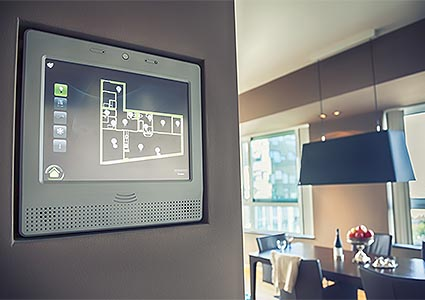Simplifying building asset management with standardisation
The typical goal for most commercial property developers and investors is to build a large portfolio. It’s a very lucrative goal, but it’s one that is inherently complex and challenging – particularly as the portfolio grows to incorporate a diverse group of buildings that are in various locations around the country. Each building will need routine management and site maintenance, which can become a costly exercise for developers without standardisation across their portfolio.
Standardisation can seem antithetical to having a portfolio of diverse building types, where each asset may have vastly differing requirements. Similarly, if premises are being leased to multiple businesses on multi-year contracts, it’s easy for developers to fall into the habit of selecting ad hoc solutions that fit an individual

building’s needs. In both cases, a lack of standardisation can lead to greater difficulty in managing assets.
For example, if you are a building developer with a portfolio of hospitality businesses in various cities across the UK, coordinating routine activities such as maintenance or upgrades is already a complex task. If each building has significantly different systems – different types of heating, ventilation and air conditioning (HVAC) or building controls, for example – then you have no simple way of knowing what is in each building.
Without knowing what is in each building, it becomes a costly and time-consuming task to find a maintenance contractor that can help with the upkeep of these different systems. Similarly, replacing existing equipment and obtaining spare parts for essential systems becomes a challenge without a clear understanding of who the manufacturer or supplier of choice is. Each of these challenges causes issues for effective asset management, and each can be minimised – if not avoided altogether – with uniform specifications across a portfolio.
A uniform specification for core building systems and services, such as HVAC or a building energy management system (BEMS), can help everybody know what is in a building and what to expect. Developers will know what kind of BEMS and control system is installed within a building, and maintenance contractors can quickly see whether to maintain, repair or source spares and replacements with a detailed idea of what to expect.
Long-term value
In addition to helping alleviate the headache of asset management and short-term issues such as maintenance, standardising systems across a portfolio with uniform specifications also helps developers to better future-proof their premises. It helps developers to stay ahead of environmental legislation and standards that govern the carbon emissions and overall sustainability of a building.
 In 2022, for example, Part L of the Building Regulations was updated to increase the sustainability criteria of non-domestic new builds. Under the latest version of the regulations, carbon emissions from these buildings must be 27 per cent lower than those built to current standards.
In 2022, for example, Part L of the Building Regulations was updated to increase the sustainability criteria of non-domestic new builds. Under the latest version of the regulations, carbon emissions from these buildings must be 27 per cent lower than those built to current standards.
Part L, alongside building energy efficiency standards such as NABERS and BREEAM, encourages building owners to have effective ways of monitoring and managing energy usage. A BEMS fits this role and serves as a long-term investment that can help perform against future legislative changes, and so standardising BEMS across a portfolio can help to stay prepared for any future changes to Building Regulations for new builds.
On a product-by-product level, standardisation can also help developers get the best possible support for their premises and the systems controlling them. A prime example is a BEMS controller. Specifications can give developers the option of working closer with the manufacturers themselves, allowing them to directly benefit from multi-year warranties and technical support that would otherwise be routed through the contractor.
Building a large and diverse portfolio is an ambitious goal for developers, complete with plenty of challenges along the way. Establishing a uniform specification for buildings can be a valuable aid towards that goal – one that pays dividends as developers get closer to realising their goal.
For a list of the sources used in this article, please contact the editor.
By Kate Rotheram
Kate Rotheram is an Intelligent Buildings Solution Consultant at Trend. With a worldwide distribution and support network covering over 50 countries, Trend Control Systems is a major international supplier of building energy management solutions (BEMS). Most Trend’s control systems are supplied, engineered and commissioned by approved systems integrators. Trend Control Systems is part of Honeywell Building Technologies.
